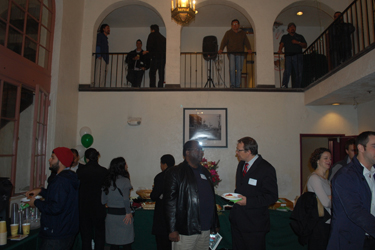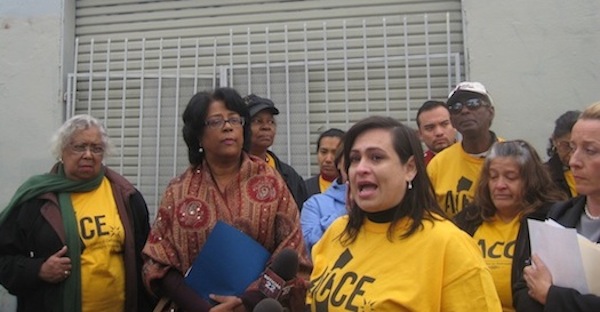
Councilwoman Jan Perry today joined local residents and members of the Alliance of Californians for Community Empowerment (ACCE) in a press conference to celebrate the imminent closure of Palace Plating, the chrome plating facility that City officials found responsible for releasing toxic chemicals into the environment surrounding 28th Street Elementary School.
“It’s an industrial use facility that was grandfathered in, that never should’ve been grandfathered in an area where people are actually living or going to school,” says Perry. “We had a cancer cluster here. They were putting people’s health at risk.”
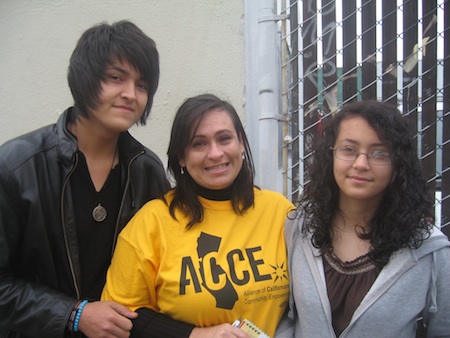 Martha Sánchez, middle, with her children, Gonzalo and Catherine Romero. Martha Sánchez, middle, with her children, Gonzalo and Catherine Romero. |
That’s what Martha Sánchez set out to prove eight years ago, when her children, who were attending 28th Street Elementary School, right across the street from the plant, started getting sick. Parents complained to health officials, city inspectors and their elected officials. Finally, they took their case to court.
It was a lengthy and difficult battle, but now parents, teachers and students are relieved that a judge ordered Palace Plating, which has been in the area for over 40 years, to permanently shut down by December 31.
“We have to change the way companies like this one operate,” declares Martha. “About ten teachers have died from cancer in the past few years.” Among them she points out Adrian Guillén, who died from pancreatic and Leticia Herrera, from lung cancer.
“We should change the cancer awareness pink ribbon to green – so people start using green technology and not allow for companies to use cancer causing toxic chemicals.”
Two of Martha’s children, Gonzalo, 17 and Catherine, 12, were among the 28th Street Elementary students who suffered from the air and ground contamination.
“I would get sick really easily. My nose was bleeding every night and I would vomit almost every day,” remembers Catherine.
Her brother Gonzalo, who says he also experienced a series of health problems, beams with pride about his mom’s accomplishment. “She’s awesome. She’s my role model. She’s an example that if you fight for a cause, anything’s possible.”
Sánchez is relieved the plant’s closing, but she’s still concerned for her children’s health. “They’re healthy now, but I’m worried about their health in the future. After all, they were exposed to the chemicals.”
Among the hazardous chemicals being released by the plant: chromium, which was found in the City’s sanitary sewer system, tetrachloroethylene, a cleaning solvent that was impacting the air quality in and around the 28th Street Elementary School, and cadmium and chromic acid.
In a settlement with the City of L.A. earlier this month, Palace Plating agreed to remediate all contamination, cease its business operations by December 31, 2011, remove all on-site hazardous waste and pay $750,000 to LAUSD in restitution for costs associated with contamination at the 28th Street Elementary School.
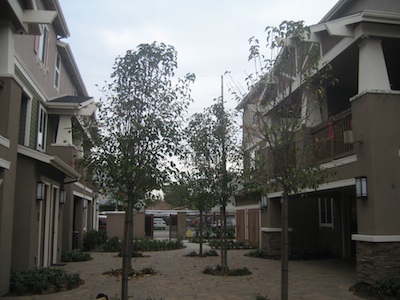 Now, Councilwoman Perry says, the community has to focus on the next phase of neighborhood improvements. “We’re building 550 units for rental and housing for sale, retail space and creating open green space. We’re going to transform this area forever.”
Now, Councilwoman Perry says, the community has to focus on the next phase of neighborhood improvements. “We’re building 550 units for rental and housing for sale, retail space and creating open green space. We’re going to transform this area forever.”
Just down the street, construction has recently finished on “The Crossings,” an affordable housing complex built by the Urban Housing Communities, which will have its grand opening in January.










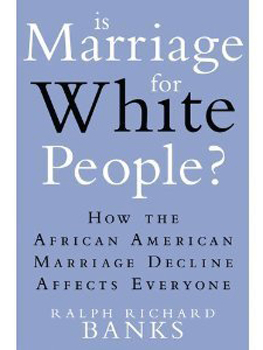 It almost begs the question “Is marriage just for white people?” Author Richard Banks tackles this issue in connection with interracial dating in his latest book, “Is Marriage for White People? How the African-American Marriage Decline Affects Everyone.”
It almost begs the question “Is marriage just for white people?” Author Richard Banks tackles this issue in connection with interracial dating in his latest book, “Is Marriage for White People? How the African-American Marriage Decline Affects Everyone.”  Actress and singer Shvona Chung remembered a time when she was on a lunch date with her ex-boyfriend and his mother. “My date had to correct his mother on the proper way to address someone from African-American descent, ‘No mom, no one says Negro anymore,’ [he said] as I sat in amazement,” Chung wrote on her Yahoo Shine blog.
Actress and singer Shvona Chung remembered a time when she was on a lunch date with her ex-boyfriend and his mother. “My date had to correct his mother on the proper way to address someone from African-American descent, ‘No mom, no one says Negro anymore,’ [he said] as I sat in amazement,” Chung wrote on her Yahoo Shine blog. 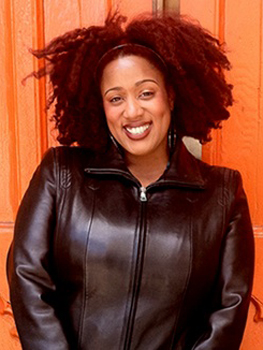 Thirty-five year old Fox news writer and freelance journalist Tomika Anderson didn’t hear Chung’s advice directly, but is following suit. Anderson has held editor positions at MTV News.com, Time, Inc. and was the senior editor of popular African American luxury and lifestyle publication UPTOWN magazine.
Thirty-five year old Fox news writer and freelance journalist Tomika Anderson didn’t hear Chung’s advice directly, but is following suit. Anderson has held editor positions at MTV News.com, Time, Inc. and was the senior editor of popular African American luxury and lifestyle publication UPTOWN magazine. 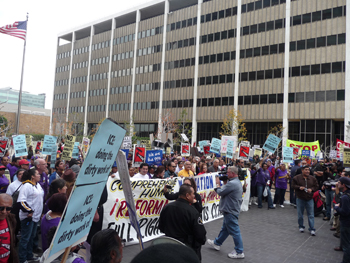 By Jacob Hay, Good Jobs LA
By Jacob Hay, Good Jobs LA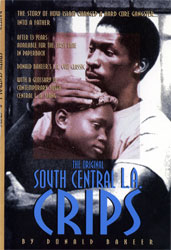
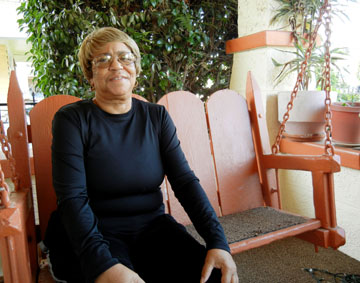 For the past four months, journalist and USC student Melissa Leu visited the monthly meetings of the neighborhood council Voices of 90037. During her time, she found out a lot about how hyper-local politics operate in underserved communities. Voices of 90037 represent the a strip just north of Watts. It sits between the 110 and Flower Street, south of Martin Luther King Jr. Boulevard to 62nd Street.
For the past four months, journalist and USC student Melissa Leu visited the monthly meetings of the neighborhood council Voices of 90037. During her time, she found out a lot about how hyper-local politics operate in underserved communities. Voices of 90037 represent the a strip just north of Watts. It sits between the 110 and Flower Street, south of Martin Luther King Jr. Boulevard to 62nd Street.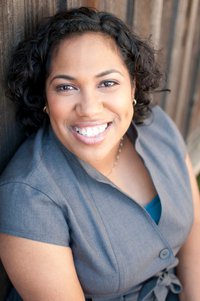
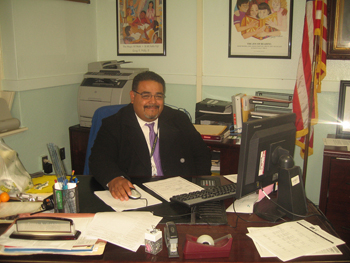 The title is officially new, but Pedro Garcia is no stranger to students, parents or teachers at Edison Middle School. He has been the school’s Assistant Principal for the past five years, in charge of curriculum and instruction.
The title is officially new, but Pedro Garcia is no stranger to students, parents or teachers at Edison Middle School. He has been the school’s Assistant Principal for the past five years, in charge of curriculum and instruction. 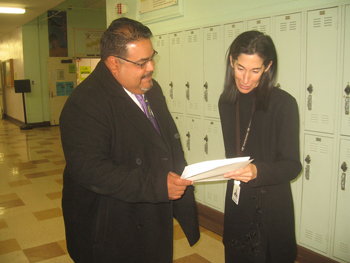 While he was Assistant Principal, Garcia was known to walk the hallways and pop in to classrooms to check in on students and teachers to see their progress and provide feedback.
While he was Assistant Principal, Garcia was known to walk the hallways and pop in to classrooms to check in on students and teachers to see their progress and provide feedback.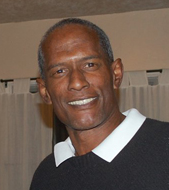 Editor’s Note: Walter Melton grew up in the Leimert Park. He is a columnist
Editor’s Note: Walter Melton grew up in the Leimert Park. He is a columnist 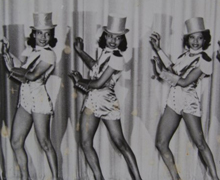 Walter’s mother Margaret is the middle dancer
Walter’s mother Margaret is the middle dancer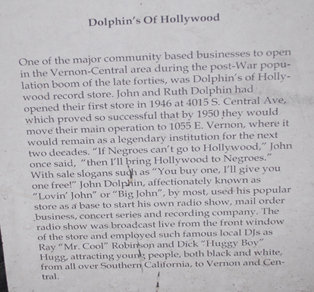
 On Monday, CD 9 Councilwoman Jan Perry joined community, government, and private partners at the historic hotel to break ground on the Dunbar Village project.
On Monday, CD 9 Councilwoman Jan Perry joined community, government, and private partners at the historic hotel to break ground on the Dunbar Village project.